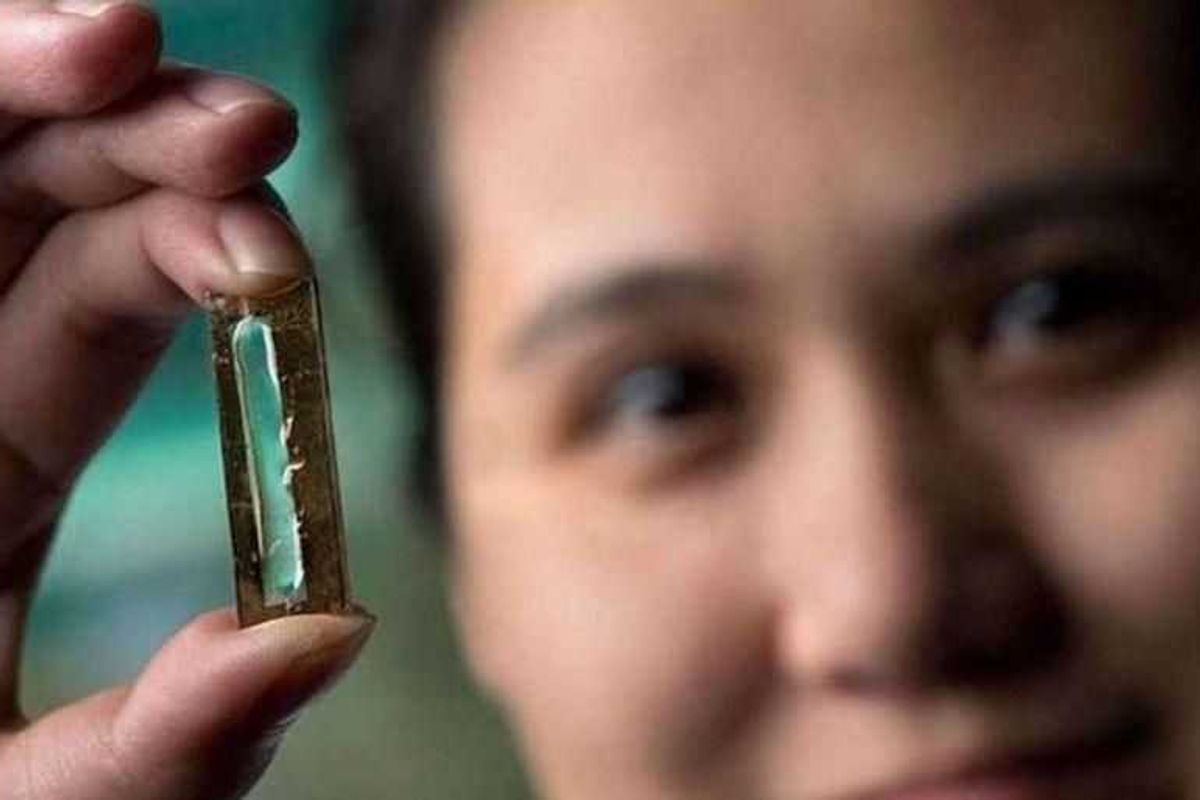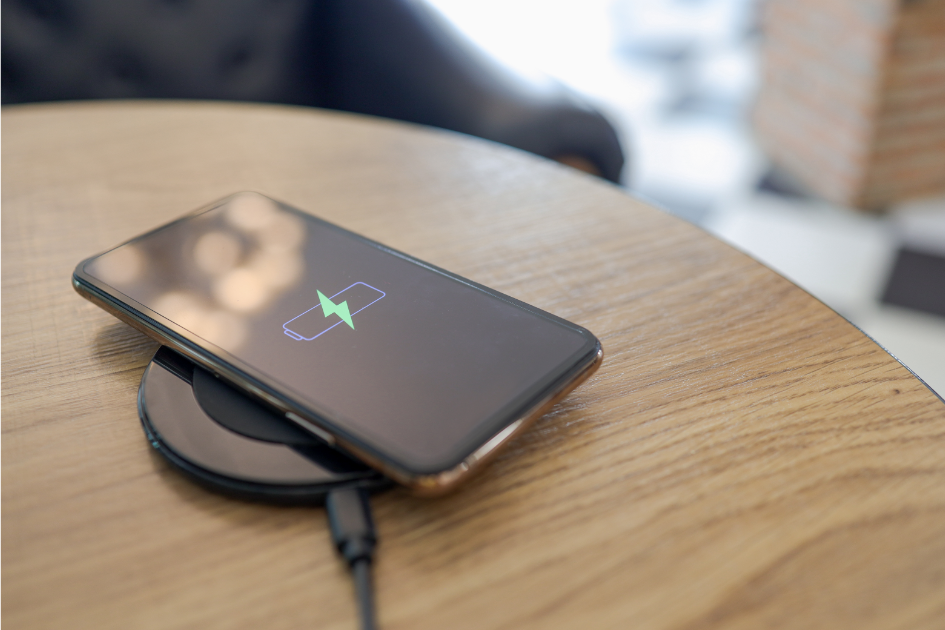We lost a lot of icons in 2016. Here are 10 wonderful things you may not know they did.
On the first day of filming "Star Wars," George Lucas walked up to Carrie Fisher to explain why Princess Leia couldn’t wear a bra.
From her memoir, "Wishful Drinking":
"'You can't wear a bra under that dress.'
So, I say, 'Okay, I'll bite. Why?'
And he says, 'Because ... there's no underwear in space. What happens is you go to space and you become weightless. So far so good, right? But then your body expands??? But your bra doesn't — so you get strangled by your own bra.'
Now I think that this would make for a fantastic obit — so I tell my younger friends that no matter how I go, I want it reported that I drowned in moonlight, strangled by my own bra."
Let’s just say it. 2016 has been the kind of year that people compare to giant, flaming containers of garbage.
Carrie Fisher was strangled by her own bra. The election was ugly. World events were uglier. And when it comes to beloved icons, it was like 2016 had a grudge against humanity and was actively plotting against our most beloved pop culture icons.
And while everyone knows what they are best known for, here are 10 important things you may not have known about many of our most beloved icons this year.
1. Carrie Fisher was a screenwriter who secretly fixed other people’s broken movies.
As a kid, I only knew her as Princess Leia, the leader of the Resistance with flawless aim and passion for rebellion and freedom. It wasn't until later that I learned about the layers of depth she had within her. First and foremost, Carrie Fisher was a writer.
Photo by Jesse Grant/Getty Images for Disney.
She spent much of her career doing nearly anonymous work, quietly fixing movies, as one of the most sought after script doctors in Hollywood. She fixed movies like "Hook," "The Wedding Singer," and "Lethal Weapon III." She added jokes. She'd flesh out two-dimensional women characters. She wrote books. She spoke openly about mental illness. She also happened to be one of the funniest people in Hollywood. And the only one to drown in moonlight, strangled by her own bra.
2. Prince was legendary ... at quietly giving to local charities.
Prince is considered one of the greatest rock stars of all time.
Photo via Chelsea Lauren/Getty Images for NPG Records.
But according to EOnline, he was also a remarkable philanthropist. He funded YesWeCode, an organization that helps kids become coders. The State reported that he donated $250,000 to the Eau Claire Promise Zone in Columbia, South Carolina, which helps fund childhood education. Another news organization reported that he donated $1,000,000 to the Harlem Children’s Zone. He was passionate about Black Lives Matter, too, fundraising and performing for their cause before he died.
3. Gene Wilder was not just Willy Wonka. He also testified before Congress to help fund cancer research.
Gene Wilder was an alcoholic gunslinger in "Blazing Saddles," a mad scientist in "Young Frankenstein," and a sketchy producer in the show (cleverly named) "The Producers."
Photo via M.J. Kim/Getty Images.
And of course, he also played a disturbed candy company wizard named Willy Wonka. His professional life was going amazingly well, and then his personal life got even better. When Gene Wilder met "Saturday Night Live" cast member Gilda Radner in 1981 on the set of the movie "Hanky Panky," he knew he had found his true love. She was funny, charismatic, and lit up any room she was in. When she died from misdiagnosed ovarian cancer, he was struggling to find meaning, to make sure her suffering never harmed anyone else ever again. From an essay he published in People magazine:
"For weeks after Gilda died, I was shouting at the walls. I kept thinking to myself, 'This doesn't make sense.' The fact is, Gilda didn’t have to die. But I was ignorant, Gilda was ignorant—the doctors were ignorant. She could be alive today if I knew then what I know now.
Gilda might have been caught at a less-advanced stage if two things had been done: if she had been given a ... blood test as soon as she described her symptoms to the doctors instead of 10 months later, and if the doctors had known the significance of asking her about her family’s history of ovarian cancer. But they didn’t. So Gilda went through the tortures of the damned and at the end, I felt robbed."
He wanted to channel his pain into something productive. He helped Cedars-Sinai Medical Centre create the Gilda Radner Ovarian Cancer Detection Program. He also helped start Gilda’s Clubs and according to The Los Angeles Times, his congressional testimony helped fund $30 million in cancer research.
4. David Bowie started an internet service provider before it was cool.
David Bowie was a rock legend, even among rock legends. He was always on the bleeding edge of rock music. He created characters. He pushed the boundaries of music and influenced musicians in every genre.
Photo by Carl Court/Getty Images.
But you know what else he did?
While other rock stars were scared of the internet, before most people even had access to internet, in 1998, David Bowie started BowieNet, a place for Bowie fans to access to the internet AND have a rockstar email address. He moved on. And became a goblin king or something. Because he’s David Bowie.
5. George Michael was a proud gay icon and a musical legend but stayed quiet about his charitable work.
George Michael was known for his LGBTQ rights advocacy, HIV/AIDS fundraising work, his strong political beliefs, and his pop hits ranging from "Father Figure" to "Faith" to "Don’t Let the Sun Go Down on Me."
Photo by Peter Macdiarmid/Getty Images.
But what wasn’t known about him, prior to his death, was his anonymous kindness and charity to everyday folks. The New York Daily News compiled a list of people who came forward after his death to share the kindness he didn’t want publicity for in life. He had given millions to Childline, a children’s charity. He once gave a free concert to the nurses who took care of his ailing mother. He volunteered, anonymously, at a homeless shelter. He once tipped a waitress $5,000 because she was in debt and a nursing student. I have faith there are others out there who were on the receiving end of his generosity that we’ll never know about.
6. Vera Rubin was not just a science legend, but also a witty crusader for women’s equality.
Vera Rubin may not be in the celebrity magazines, but she’s a astronomer and visionary who confirmed significant scientific findings and who dealt with sexism with bluntness and wit.
Photo by Carnegie Institution of Washington.
She was the first female astronomer to observe the skies at Caltech’s Observatory, but there was no women’s bathroom at the observatory, so she cut out a little paper doll of a dress and slapped it on the men’s room door. She said, "There you go; now you have a ladies’ room."
And more importantly, she confirmed the existence of dark matter and has been hailed by many in the scientific community of someone who deserves the Nobel Prize for physics, which no woman has won in 50 years.
7. Muhammad Ali was an incredible fighter but, more importantly, also a civil rights activist.
Muhammad Ali was the greatest. He told you that. And it also was true. And while many people remember him for his achievements in the ring and his lighting of the Olympic torch at the 1996 summer Olympics in Atlanta, most people tend to gloss over the other side of his story.
Photo via Kent Gavin/Keystone/Getty Images.
He was an unapologetic civil rights activist who refused to fight in the Vietnam War. In his words:
"My conscience won't let me go shoot my brother or some darker people or some poor, hungry people in the mud for big, powerful America. And shoot them for what? They never called me nigger, they never lynched me, they didn't put no dogs on me, they didn't rob me of my nationality, rape and kill my mother and father. Shoot them for what? How can I shoot them poor people? Poor little black people and babies and children and women. How can I shoot them poor people? Just take me to jail."
He was stripped of his title and banned from boxing for that. He also was banned from traveling overseas. So he spent four years speaking out at colleges to earn money and bring attention to the issues that almost no one was willing to address. In 1971, the Supreme Court overruled his draft dodging conviction and he returned to regain his title.
8. Ron Glass was a fictional cop, a fictional space priest, and a real-life college education fan.
If you aren’t totally sure why Ron Glass’s name sounds familiar, let me refresh your memory. If you grew up in the 1970s, you might know him as Detective Ron Harris from "Barney Miller." If you grew up in the 2000s, if you are like me, then you love him for his role as space preacher Shepard Book on "Firefly." But if you are a kid living in poverty who up in Los Angeles from 1992 until now, you probably know Ron Glass as the guy who spent over 20 years mentoring children and making sure hundreds of them got the resources to go to college.
After witnessing the Rodney King riots, he wanted to make an impact on the community. So he joined the board of the Wooten Center, which helps kids get on the path to a college education. He started mentoring and reading to kids, emceeing events, raising money, and getting kids the resources they needed. You can donate in his name here.
9. Harper Lee wrote one of the most important books ever. (And one of the best snarky letters ever.)
In 1966, the Hanover County School Board in Richmond, Virginia, took offense to Harper Lee’s pivotal work "To Kill a Mockingbird."
Photo by Chip Somodevilla/Getty Images.
To them, the coarse language and discussion of racial was, according to one board member, "immoral literature." They unanimously voted to ban it. When Harper Lee found out, she decided to voice her expert opinion in an open letter to the editors of the local paper, the Richmond News Leader. It read:
"Recently I have received echoes down this way of the Hanover County School Board's activities, and what I've heard makes me wonder if any of its members can read.
Surely it is plain to the simplest intelligence that 'To Kill a Mockingbird' spells out in words of seldom more than two syllables a code of honor and conduct, Christian in its ethic, that is the heritage of all Southerners. To hear that the novel is "immoral" has made me count the years between now and 1984, for I have yet to come across a better example of doublethink.
I feel, however, that the problem is one of illiteracy, not Marxism. Therefore I enclose a small contribution to the Beadle Bumble Fund that I hope will be used to enroll the Hanover County School Board in any first grade of its choice."
According to the story, Lee included $10 for The News Leader’s Bumble Fund, which distributed 50 free copies of the book to Hanover students. The fund, named after a character in Charles Dickens’ "Oliver Twist" who proclaimed "the law is a ass," was started in 1959 by News Leader Editor James J. Kilpatrick "to redress ludicrous cases of patent injustice."
A month later, the board un-banned the book and claimed they never intended to in the first place. We’ll miss you, Harper Lee.
10. Gwen Ifill was a crack journalist but a private mentor to dozens and dozens more.
Gwen Ifill worked at The Baltimore Evening Sun. She did a stint at The Washington Post. She reported for The New York Times. She hosted "Washington Week" for 17 years. She hosted "NewsHour" for the last three years as half of the first all-woman national network news anchor team. She was, simply put, a legend.
I recently had the opportunity to meet Gwen Ifill. The 2016 presidential debates were around the corner. I asked her, "Knowing that candidates tend to ignore questions if they don't want to answer them, with the bizarre election we are currently in, how do you deal with a candidate who refuses to answer questions, or makes up facts out of whole cloth?"
Her response impressed me. This isn't verbatim, but essentially, she said trying to get candidates to answer questions they are trained to dodge is a waste of time. You can try a follow up, and if they still dodge, then you gently acknowledge to the audience that you're on the same page as them. Let the audience know you know the candidate didn't answer. Then move on to the next thoughtful question.
Photo by Alex Wong/Getty Images for "Meet the Press."
During the taping, on a break, she specifically sought out and took time to meet a young woman of color studying to be a reporter. Then I discovered what many already knew, that it’s something she actively did her entire career. She took her job as a role model and mentor very seriously. So much so that a vast community of journalists wrote about how she helped them get to where they are after she died.
Gwen Ifill had a pretty damn impressive career, but what’s more impressive are the dozens of journalists of color she mentored and inspired whose work will live on as a testament to her selflessness and passion.
Just to say it, I’m super ready for 2016 to be over.
It’s hard to say goodbye to so many powerful icons of our culture, but it’s encouraging to know their good works will love on well past their own lives.Obviously, this isn’t a comprehensive list. Many other great people were lost. Who meant the most to you and why? When you share it, let us know.



 TikTok · Ale
TikTok · Ale

 Phone charging.
Phone charging. bill nye chemistry GIF by NETFLIX
bill nye chemistry GIF by NETFLIX 
 A happy woman in the Netherlands.via
A happy woman in the Netherlands.via

 Thumbs up
Thumbs up  Woman in chair.
Woman in chair. 